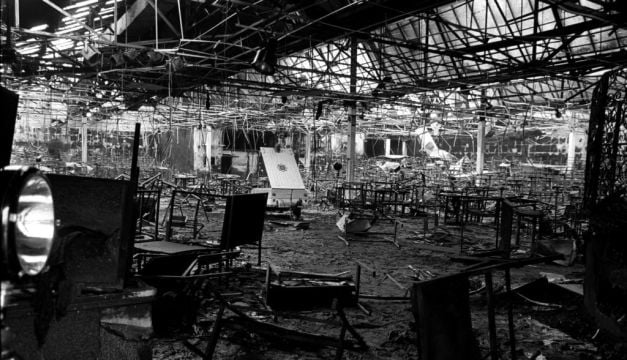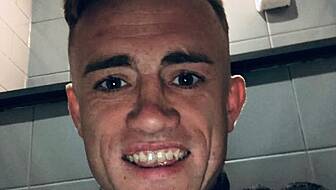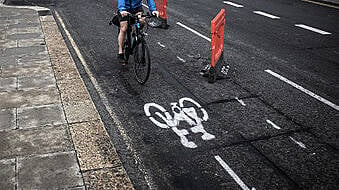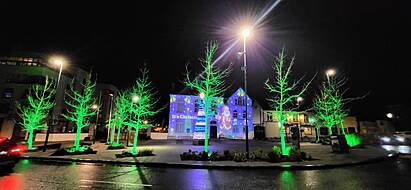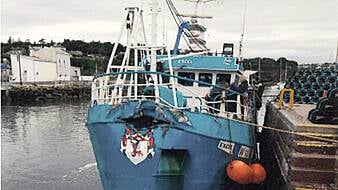The Stardust inquest has heard that a senior garda who led the investigation into the cause of the fatal blaze found “no evidence” to indicate the fire was started maliciously.
Detective Superintendent John Courtney said more than 1,600 statements were taken following the blaze which claimed the lives of 48 young people at the Artane nightclub in the early hours of February 14th 1981.
The Det Supt told the 1981 Tribunal of Inquiry before Mr Justice Ronan Keane that he followed up on all statements in relation to the possible cause of the fire being deliberate and said from the statements taken, no evidence came to light which would indicate the fire was malicious.
Statements
Detective Superintendent Courtney’s evidence to the tribunal and his 1981 garda statements were read into the record on Monday at Dublin District Coroner’s Court. He is one of a number of witnesses unavailable to give evidence to the inquest.
The Det Supt told the tribunal that during the course of the investigation, gardaí interviewed all of those who were within a curtained off area of the nightclub before the fire was observed and said no evidence came to light that they might be involved.
The garda said a total of 841 people were in attendance on the premises on the night of the fire and a total of 1,649 statements were taken.
He also told the tribunal that he was satisfied from garda investigations that the four youths seen on the roof of the building on the disco night had “nothing to do with the fire”.
In his statement of evidence, the Det Supt said he was in charge of a daily conference held each morning during the course of the investigation. He said he was familiar with every aspect of the investigation and the work carried out to try and establish the exact location of the fire and how it occurred.
He said he read all statements taken, paying particular attention to those made by people who saw the fire in the early stage.
“Persons who were within the curtained off area prior to the fire occurring were checked out and eliminated as likely suspects,” he said adding statements were also taken from those seated at the five tables nearest this area.
The senior garda said all staff were also interviewed with particular reference to the origin of the fire and the position of all the exits and whether they were locked or unlocked.
Doorman statement
Det Supt Courtney said all statements and remarks made alleging the fire was malicious were checked out and “nothing came to light indicating that there was any substance in them”.
He said particular attention was paid to the statement of doorman PJ Murphy who said a girl had reported to him that: “They’ve started a fire in the corner”.
He said the girl denied this and told gardaí that what she had said to Mr Murphy was: “There’s a fire in the corner”.
The inquest heard 89 gardaí were involved in the investigation and 24 of these were directly involved at the scene, not including garda technical bureau experts.
The evidence of a senior fire officer who activated the Major Accident Plan at the scene was also read into the record today.
Third Officer Joseph Kiernan told gardaí at the time that he had been at home when he received a call at 1.51am about a serious fire at the Stardust.
He said he immediately made his way to the scene and found large numbers of people “in a state of panic”.
The fire officer said he returned a brigade call to headquarters via the radio on the emergency tender, signifying that he required extra fire appliances.
Major Accident Plan
He said he then entered the building through exit three, made a further assessment of the situation and decided to put stage one of the Major Accident Plan into operation as he felt it was likely there would be many casualties.
Mr Kiernan said he went to the eastern side of the building where firemen were working to bring the blaze under control. “I was quite satisfied at this stage that it was likely that a large number of lives had been lost so spoke to a garda and requested stage two of the Major Accident Plan be put into operation,” he said.
He said he then went into the building and assisted other firemen in rescuing about ten people from the toilets on the right of exit five. He said he then moved back among the seating on the level area on the floor and saw a large number of dead bodies.
Chief Fire Officer with Dublin Fire Brigade at the time of the blaze, Thomas P O’Brien said in his 1981 garda statement that he was informed of the fire in a phonecall to his home at about 1.52am. He said he immediately rushed to the scene.
He said he arrived at the site at 2.07am and, after speaking to third officer Kiernan he was satisfied everything possible was being done to deal with the situation.
Mr O’Brien said he entered the building through exit number four, saw a badly burned body in front of him and formed the opinion that there was likely to be others.
He said Mr Kiernan confirmed this and informed him that he was organising brigade personnel to systematically search for bodies.
After exiting the building, he said he informed the third officer that he was going to return a fire under control message and stand down the major accident plan. He said he did this at 2.54am.
Earlier, a survivor told how his friend who perished in the blaze was within feet of an exit when the lights went out and he lost him in the confusion that followed.
Douglas Doyle, 17 at the time, said he and his friend Eamonn Loughman, who was 18, walked across the tops of the tables in the tiered seating area towards exit five after they spotted the fire and saw smoke rolling across the ceiling.
Mr Doyle said just as they reached the bottom, he fell off the last table, the lights went out, and he lost sight of his friend Eamonn.
He said he got back up, put his hand on the shoulder of a person in front of him and “fell out the exit”.
“[Their mother] never really got closure”
He told the inquest that he believed he was the last person to make it out of that exit alive. He said when he looked back in through the door the entire building was ablaze.
Mr Doyle said because Eamonn was ahead of him as they left the club, he assumed his friend was already out.
The inquest heard that Mr Loughman was not formally identified until 2007.
In a pen portrait provided to the inquest earlier this year, Eamonn’s brother Andrew told how, because the teenager was not identified at the time, their mother “never really got closure”.
“She hung on to the belief that he could be alive, she believed for years that he banged his head and lost his memory and was out and about lost somewhere. She believed he was going to turn up one day,” he said.
The witness also told of seeing a girl lying face down about 15 feet inside the door. “She was kicking and struggling,” he said, before “her clothes just vanished, disappeared, and she stopped moving”.
Last out the door
He told Kate Hanley BL, representing nine of the families including the family of Mr Loughman, that he believed he was one of the last people to leave through exit number five, “if not the last person”.
He said he and Eamonn left together and were very close to each other until the moment he lost sight of him as they neared the exit door.
Asked if he thought his friend had fallen too, Mr Doyle said: “I have no idea. I couldn’t hear anything, I couldn’t see anything. It was just by the grace of God I just fell out the door. I was lucky.”
Mr Doyle said after he got out, he looked back and: “The entire building was ablaze and there were people trying to get back into the building…It was just like a furnace you couldn’t go back in.”
He said he spent some time looking for his friend outside the exit door because he assumed “if I got out, he got out” but couldn’t find him anywhere.
The inquest also heard today how Sergeant Thomas Callanan of Bridewell station visited the Silver Swan bar in the Stardust complex on two occasions in July 1980 when he witnessed a fire exit door locked while patrons were in the venue. He said he pointed out the danger on both occasions to a bouncer.
He was again at venue in August that same year, where he noticed the emergency exit was still locked. He spoke to a manager and “pointed out the danger should a fire occur in the premises”.
“I informed him that if the lock was not removed before the date of renewal for the licence of the premises, I would bring to the notice of the court the fact that the emergency exit was locked,” he said in his 1981 garda statement, which was read into the record today.
The sergeant said he visited the premises in the last week in August and saw the lock had been opened on the door and was hanging on the end of a chain from the bar on one side of the door.
